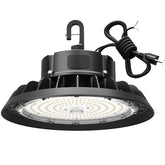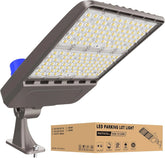Learn about LED drivers: the basic components of LED lighting
LED driver is a very important component of LED lighting, the next section we will in-depth understanding of LED lighting driver components.
What is an LED driver? What does it do?
Since leds are low-voltage devices, LED drivers are needed to help convert high AC power to the low-voltage direct current required by leds to ensure the stable and safe operation of LED luminaires.
Type of LED driver
There are two main types of LED drivers, constant current and constant voltage:
Constant current driver: Constant current driver can provide a fixed current for LED lamps, avoid the instability caused by current fluctuations, and ensure the stable operation of LED lamps. Mainly suitable for high-power LED lamps.
Constant voltage drive: Constant voltage drive can provide a stable voltage for LED lamps, avoid the current is too large or too small to cause some problems, more suitable for low-power LED lamps.
LED drive and dimming
LED drivers play a key role in the dimming function, but it should be noted that not all LED drivers are compatible with dimming, and drivers that are compatible with dimming can have the following two dimming methods:
Dc dimming: DC dimming by adjusting the current of the LED lamp to adjust its brightness, through this dimming method can directly reduce the current to dim the light, so it is not easy to affect the performance or service life of the lamp, and relatively accurate, there will be no flicker problems, more suitable for use in commercial or architectural applications such as the need for fine adjustment of lighting.
Ac dimming: AC dimming by changing the voltage of the lamp to adjust the brightness of the LED lamp, this dimming method is compatible with the current dimming light and the installation is relatively simple, so it is relatively popular choice, although it may not provide the same high dimming accuracy as DC dimming, but because it is easy enough to use and high integration, so it is more common. It is used in many standard lighting applications. Especially in residential and commercial environments.








